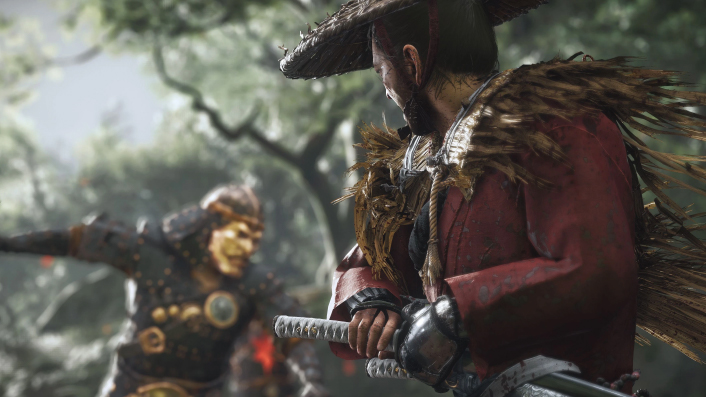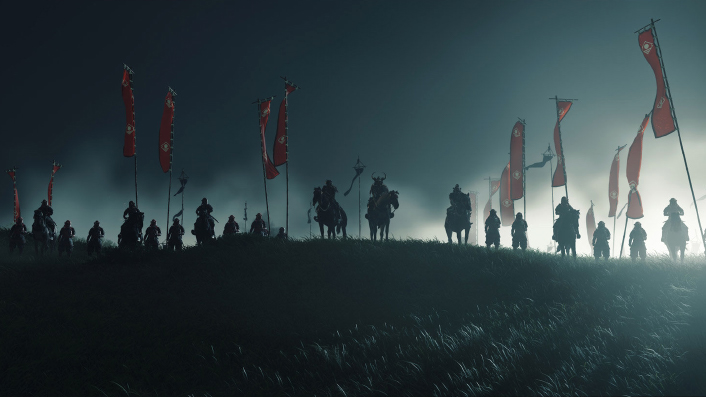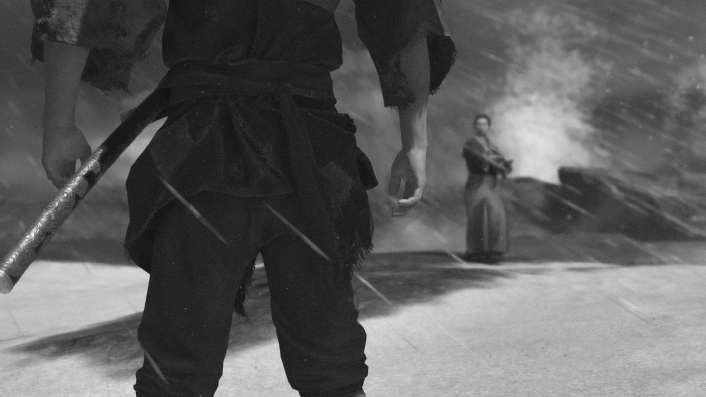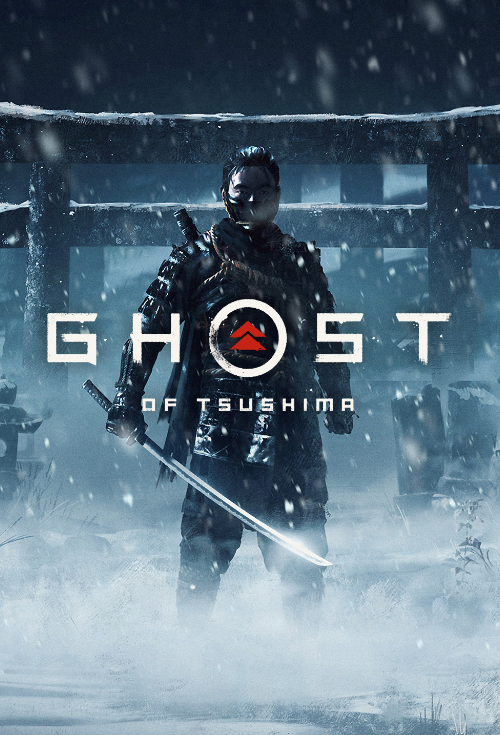How hit PS4 game Ghost of Tsushima was influenced by Kurosawa and samurai cinema

Ghost of Tsushima is the latest breathtakingly cinematic PS4 production. Tony Stamp picks the brains of one of its key creators, Jason Connell, discussing the game’s visual art and connections to samurai cinema.
If you’re a casual observer like myself, you may have noticed a trend emerge over the last wee while: video games are looking a lot more like movies. Sure we’ve had cutscenes and narrative arcs for a long time, but ‘cinematic’ is a term that’s increasingly applicable. Think of the Indiana Jones-esque escapades of the Uncharted franchise, the zombie horror of The Last Of Us, or the superheroics of Infamous. These games all hang themselves off recognisable movie frameworks, but they also look like movies. Shots are well framed; different types of light dapple the scenery; the camera moves are expressive.
See also:
* All movies now playing in cinemas
* All new streaming movies & series
And now Ghost of Tsushima has thrown its hat in the ring: in part a tribute Japanese samurai cinema, it looks amazing. That’s largely thanks to Jason Connell, the Creative/Art Director at Sucker Punch games. If you look at his social media it becomes apparent he’s a guy who’s deeply interesting in visual composition, and the various shots from Ghost of Tsushima that have already populated the web are testament to that passion.
“I used to paint skies,” he tells me, “Matte paintings for games. When you’re playing a game, 90% of the colour and mood and emotion comes from your upper hemisphere. Everything above the horizon line is going to set the mood. Is it a dark stormy sky, is it a refreshing sunrise, is it a blue day where you feel like there’s no worries? It’s such a great way to set up colour and mood, so I almost always start there. For example, in one section of the game, we can have it be rainy all the time, because this is an area where the stories are maybe sadder, or there’s a bit less hope.”

It’s a very visual approach to design that he says emerged even prior to the game’s narrative, asking himself “How can colour or atmosphere tell a story before the words are even written?”
When you start to appreciate all the elements that go into making a modern AAA game—performance, cinematography, music, and sound—you can imagine the effort that must go into creating what is essentially a twenty-hour animated movie. But much of this is of course playable, so there are some obvious differences.
“Movement is one big difference,” explains Jason, “It manifests itself both visually and aurally in our game. Everything moves—clothes, hair, trees, bushes, grass.”
He’s referring to the omnipresent breeze that blows through Ghost of Tsushima, telling me “That stuff takes time, research, energy, and tech. If you look at even just a fifteen-second segment of our game with no audio or story, the wind is obviously a very important part of how it looks and feels. But it also has a huge gameplay affordance to guide you through the island. That is where true beauty happens, when gameplay functionality meshes well with some strong visual statement.”
“It’s technically hard. But it’s also hard because it can get fatiguing. I was always telling my audio director ‘I want to hear the wind more. You’re on a mountaintop, it should be muffling in your ear.’ And he would say ‘we’ve got to be careful because it could be tiring on the ear’”.

As Jason’s role encompasses both art and creative direction, it takes him in several different directions. The artistic impulses dictate “How should the colours make you feel? How should the motion and movement make you feel? What should the landscape and characters look like?”
As Creative Director, he sums up his job as asking “What are the chief inspirations that get us excited?”
Those inspirations are largely cinematic.
“Games are heavily inspired by film. They are becoming more cinematic because that’s where we take our references from. We knew we wanted to feel realistic. The lighting and the shading look realistic. But maybe we can play with the composition of the trees and the plants to make it feel more exaggerated and more memorable.”
Samurai films, and in particular the landmark works of Akira Kurosawa, were a huge touchstone. I ask Jason how his team prepped to incorporate these influences into the game.
“There was a team movie night. We watched the classics like Seven Samurai and Yojimbo. Takashi Miike’s film 13 Assassins gave us lots of good inspiration, especially the second half of that movie, which is mostly fighting. There are parts of our game which feel very similar. Quick, bloody deaths instead of gory ones. They are not classic old school samurai, they are doing things like jumping from rooftops because they’re assassins, which was also influential.
“And then eventually we paid for the rights to all these different movies, and I just flipped through the colour thumbnails and looked for good compositions and interesting colour choices. I looked at almost every samurai movie—how they began and ended, cinematography-wise. So many Kurosawa movies open with really wide expansive shots, where a person is like drowning in a sea of green. That gave us ideas on how we could depict things in our game.”

Take a look at any screenshot from Ghost of Tsushima to see what he means—figures silhouetted against golden burning embers; a ray of sun through dark clouds as a figure gallops across a green field; a graveyard shrouded in mist—they’re all pretty eye-popping.
It leads me to wonder what other films Jason has been influenced by.
“My favourite movie of all time is Blade Runner. And I actually liked the new one a lot. I love Ran. Good composition, good colours. I love Wes Anderson movies.
“But I think that my most transformative movies—and this is gonna sound trope-y—but when I was a kid my dad would just religiously watch Star Wars with me. As I grew up I started liking westerns, and then I found out about samurai movies, and realised that samurai movies, and The Hidden Fortress particularly, were a huge inspiration for A New Hope”.
Jason’s voice rises in excitement as he tells me “It’s amazing how I’ve come full circle. My love of Star Wars has brought me here. Just look at Darth Vader’s cape, or lightsabers [to see how George Lucas was borrowing from Kurosawa]. I just think it’s fascinating.”

Ghost of Tsushima goes a step further in paying tribute to the legendary director with its Kurosawa Mode option, where the game switches to black and white, emulates the look of film grain and ramps up the wind and rain.
“The wind we have through the game, I doubled or tripled it,” says Jason.
“It’s even more expressive. The flap of someone’s sleeve, for example, is more exaggerated.”
This sounds to me like an extraordinary effort when so much thought has already gone into the colour cinematography. Jason confirms my suspicion, telling me “Because we created a world that has multiple weather conditions, it made the black & white harder. I had to look at a tonne of different films, (mostly Kurosawa), and different parts of scenes—what do the whites look like, what do the darks look like, what does daytime look like—and try to translate that over to our variety of weather conditions.

“It takes the colour version and puts an orchestrated filter over it. We tried to really showcase the really deep blacks, which I take as a very cinematic feeling. Don’t have a lot of white on the screen, and have good dark blacks. It feels more dramatic, and more cinematic.
“We also adjusted the audio output. We have internally-produced software that mimics how the game would sound going through old audio processors. We wanted to capture what it would have sounded like when Kurosawa was making movies”.
As well as this abundance of cinematic influence, the Sucker Punch artists also looked to the natural world, travelling to the real island of Tsushima multiple times to document its look and feel. Jason says “I personally shot around 15,000 photos. Anything I found interesting, whether it be an insect on a plant, or a species of tree I had never seen before that was very intentionally planted at a Buddhist temple.”

The team also recorded audio there, and made 3D scans of certain things, like a specific type of leaf that was incorporated into the game. All this to service a sense of immersion, and to evoke what Jason’s colleague Joanna Wang calls a ‘true cinematic moment’.
He tells me everyone involved hopes players will let themselves drift away from the gameplay, and simply take in the island and its sights. “If we could make it beautiful enough that people wanted to just stop and take photos, in our Photo Mode, that’s the ultimate goal for me.”
















